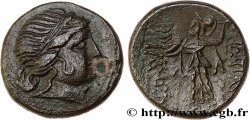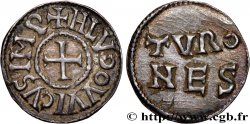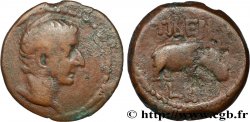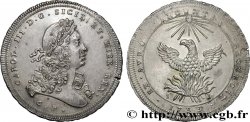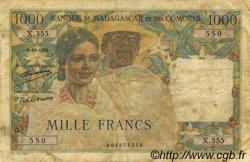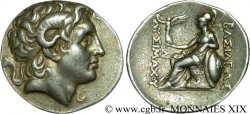Live auction - bgr_379567 - THRACE - MESEMBRIA Statère d'or
You must signin and be an approved bidder to bid, LOGIN TO BID. Accounts are subject to approval and the approval process takes place within 48 hours. Do not wait until the day a sale closes to register. Clicking on "BID" constitutes acceptance of the terms of use of cgb.fr private live auctions.
Bids must be placed in whole Euro amounts only. The sale will start closing at the time stated on the item description; any bids received at the site after the closing time will not be executed. Transmission times may vary and bids could be rejected if you wait until the last second. For further information check the Live auction FAQ
All winning bids are subject to a 18% buyer’s fee.
All winning bids are subject to a 18% buyer’s fee.
| Estimate : | 3 200 € |
| Price : | 3 000 € |
| Maximum bid : | 3 000 € |
| End of the sale : | 01 March 2016 14:02:55 |
| bidders : | 3 bidders |
Type : Statère d'or
Date: c. 250-220 AC.
Mint name / Town : Messembria, Thrace
Metal : gold
Diameter : 18,5 mm
Orientation dies : 12 h.
Weight : 8,43 g.
Rarity : R2
Coments on the condition:
Exemplaire sur un flan bien centré des deux côtés, légèrement irrégulier sur la tranche (petites marques de manipulation). Très belle tête d’Athéna au droit. Joli revers finement détaillé, légèrement tréflé sur la légende et le différent. Conserve la plus grande partie de son brillant de frappe et de son coupant d’origine
Catalogue references :
Obverse
Obverse legend : ANÉPIGRAPHE.
Obverse description : Tête casquée d'Athéna à droite, coiffée du casque corinthien à aigrette, orné d'un serpent ; les cheveux tombant sur la nuque en mèches mêlées.
Reverse
Reverse description : Niké debout à gauche, les ailes déployées, tenant de la main droite une couronne et de la gauche la stylis ; dans le champ à gauche, un casque corinthien tournée à droite.
Reverse legend : BASILEWS/ ALEXANDROU
Reverse translation : (du roi Alexandre).
Commentary
Semble de même coin de droit que l’exemplaire du British Museum (MP. n° 973, pl IV) qui présente la particularité d’avoir deux petits globules à la base du cou.







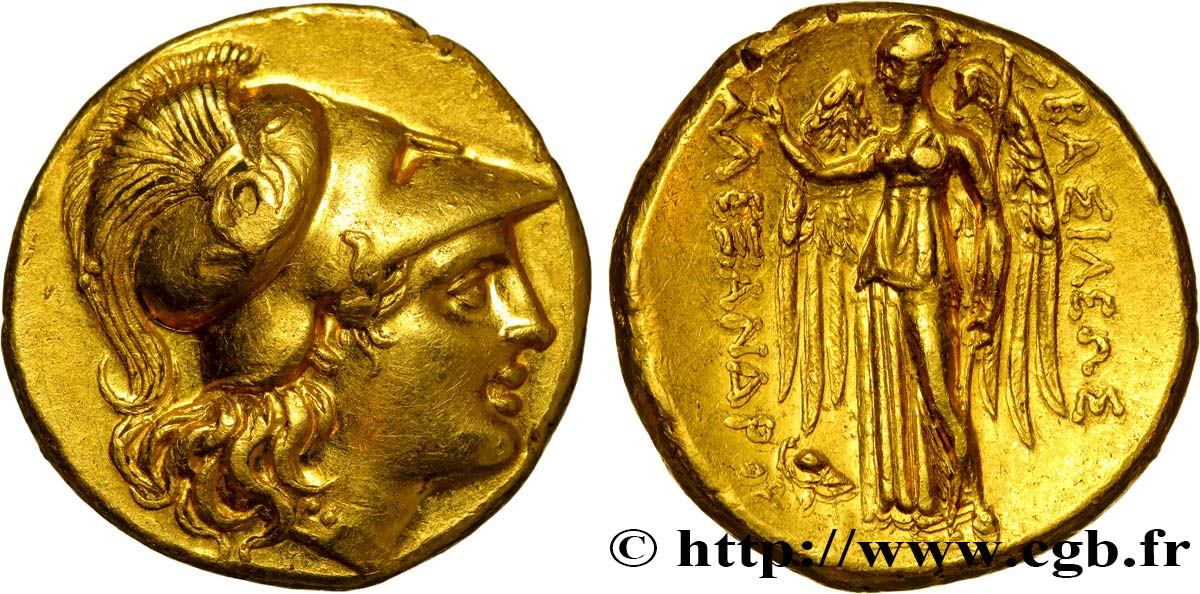
 Report a mistake
Report a mistake Print the page
Print the page Share my selection
Share my selection Ask a question
Ask a question Consign / sell
Consign / sell
 Full data
Full data